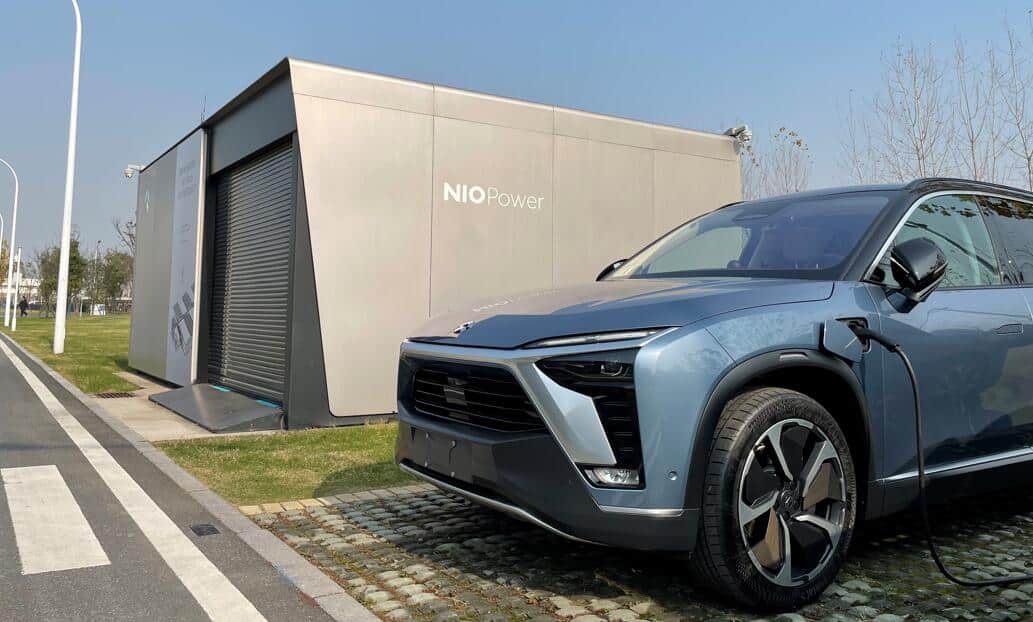CITIC Securities expects energy replenishment to remain primarily charging, supplemented by battery swap, over the next five years, but the latter's adoption will accelerate significantly.
(Image credit: CnEVPost)
Chinese power battery giant CATL's move to launch battery swap brand EVOGO has brought the emerging model into the spotlight and sparked yet another discussion about its pros and cons versus recharging.
In a research note released today, top Chinese brokerage firm CITIC Securities said the rapid growth of the new energy vehicle (NEV) industry will allow the charging and battery swap industries to accelerate, with charging still expected to be the dominant mode of energy replenishment in the next five years, supplemented by battery swap.
However, the team noted that the application of the battery swap model in some high-end passenger cars and operational vehicles will be significantly accelerated under the promotion of capital, vehicle makers and policies.
Here are the pros and cons of charging and battery swap as listed by CITIC Securities.
Competitiveness
The charging and battery swap models differ in terms of vehicle and battery suitability, grid and land resource requirements, and investment intensity.
The existence of these factors means that in the medium term, NEV replenishment will continue to be dominated by charging, with battery swap as a complementary model.
However, the growth of the battery swap model is expected to see significant strengthening.
Costs
Battery swap basically has no comprehensive cost advantage for ordinary private car owners, but it can significantly shorten the replenishment time and significantly improve the car using experience.
From the perspective of cost competitiveness and convenience, the battery swap model already has a competitive advantage in the field of operational vehicles and high-end passenger cars.
Battery
The standardization of different models is low, and the battery swap model is difficult to have a scale effect in the short term.
But battery packs are monitored by battery swap operators for unified charging and specialized care, which facilitates the subsequent gradual utilization and extends the value life of the battery and its resource products.
Grid
The battery swap model is more grid-friendly and helps save investment in grid retrofitting.
The batteries used in the battery swap model can be recharged in an orderly manner, which improves the utilization of the grid, reduces the pressure on capacity expansion, and lowers the cost of electricity.
Land Occupation
The land occupation of a charging station is significantly higher than that of a battery swap station.
Battery swap stations can help cities, especially large cities, use land more efficiently.
Profitability
For charging facilities, 8-9 percent utilization is the break-even point, and the current average utilization rate for the industry is only about 6 percent.
This means that charging facility operators are still in the red, but some of the leading players are expected to be the first to see stable profits.
For battery swap stations for passenger cars, a utilization rate of around 20 percent is the break-even point. At present, the actual utilization rate of most of these facilities is 10-15 percent, which is still far from profitability.
For battery swap stations for commercial vehicles, a utilization rate of about 10 percent is the break-even point. The demand for these vehicles is clear and battery swap players in this segment are expected to be the first to make a profit.
Market Space
From the perspective of equipment investment demand, the battery swap model is expected to have more than 10 times growth space in the next five years, significantly higher than the charging model.
From the perspective of investment efficiency, the average investment required for charging facilities per vehicle is about RMB 9,000, while for battery swap facilities the amount is RMB 25,000.
At present, the investment efficiency and applicability of the charging model are higher than that of the battery swap model, and charging is more widely used at this stage.
From the perspective of operational market space, the battery swap market in China is expected to reach RMB 60.5 billion in 2025, and the charging market is expected to be about RMB 173 billion.

